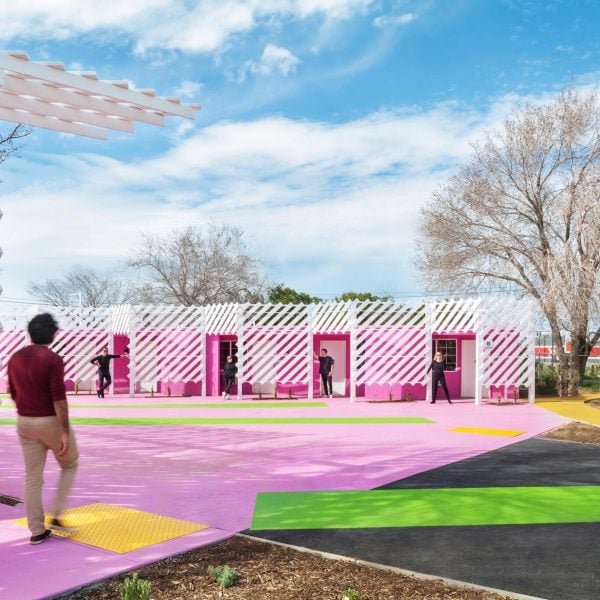US studio Kadre Architects has converted two rundown motels in Los Angeles County into The Sierra, a supportive living complex that serves as a “new housing prototype” for people experiencing homelessness.
The project is located in Lancaster, a city in the Mojave Desert situated about 70 miles (113 kilometres) north of Los Angeles.
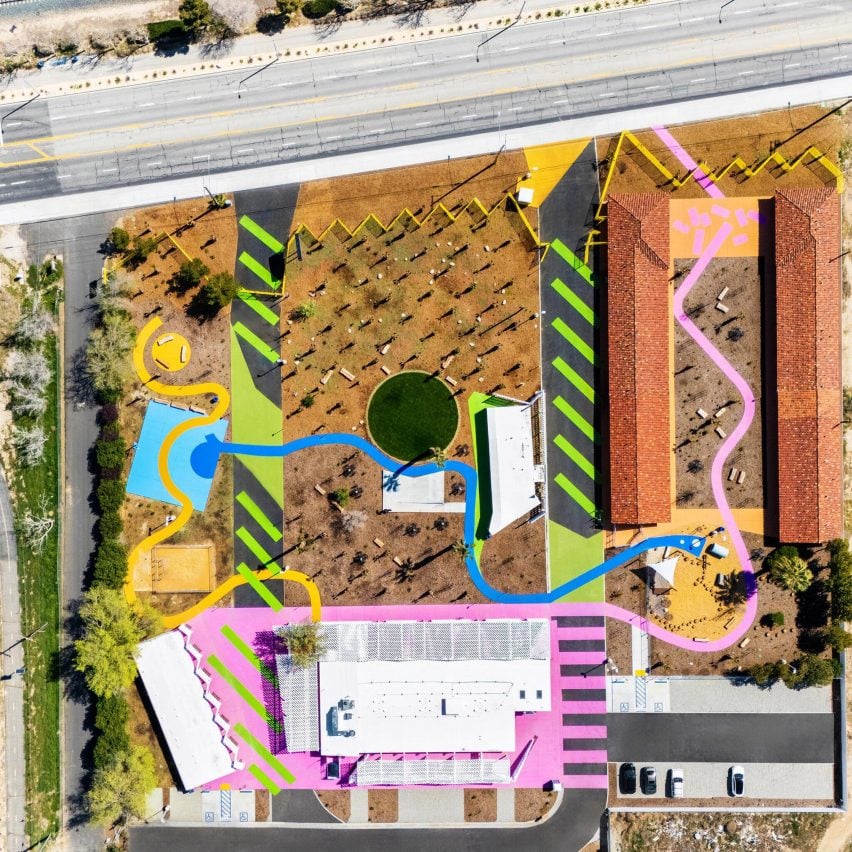
The Sierra is operated by Hope the Mission, one of the largest rescue shelter organisations in America.
Set on a flat, four-acre (1.6-hectare) site near a highway, the complex consists of five buildings surrounded by pathways and park space.
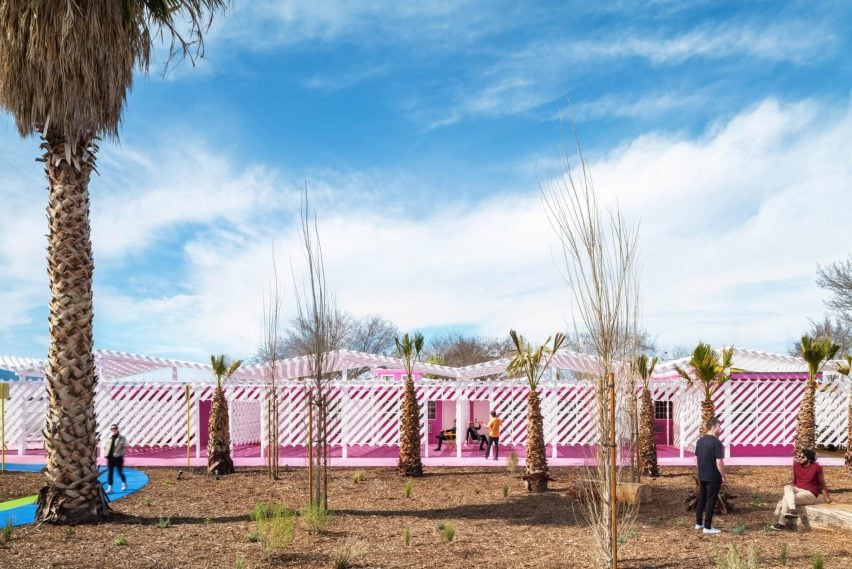
The site offers 38 housing units, each consisting of a single room with two bunk beds. The rooms range from 250 to 300 square feet (23 to 28 square metres).
Additionally, there is a commercial kitchen, a children’s play area, a stage, a chicken coop, a basketball court, an exercise area and parking.
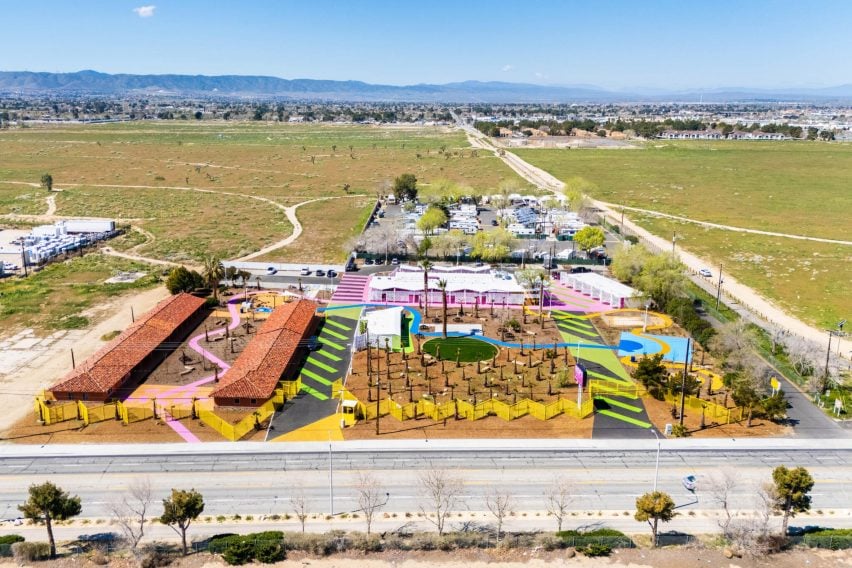
The project was designed by LA’s Kadre Architects, which has created several transitional housing projects in southern California.
It marks a departure for the firm, as its prior housing projects have been in urban and suburban areas.
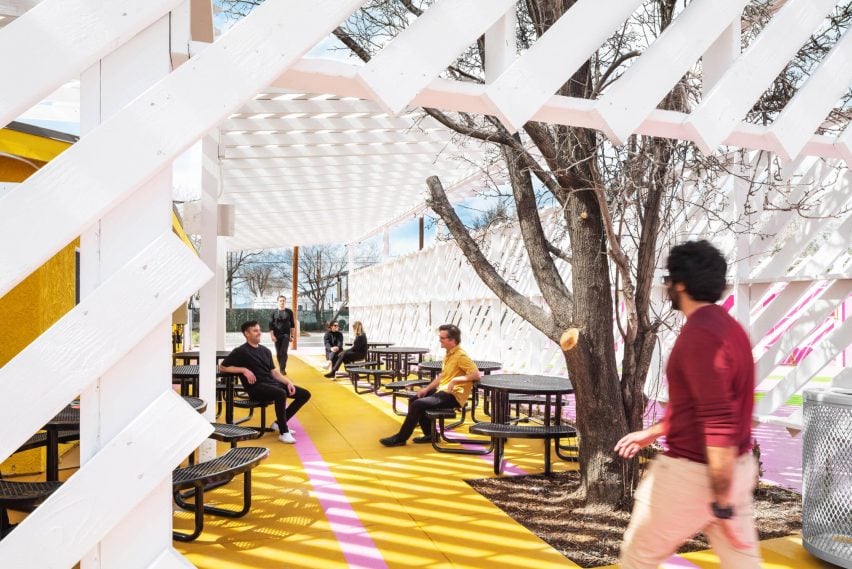
The project’s landscape architect was Terremoto, and the builder was Ford EC.
The site formerly held the the Sands and Tropic motels, which were built in the 1950s and became plagued with criminal activity over the years, according to the team. The Sierra brings an “upgrade to the neighbourhood” while also serving as a model for transitional housing.

“The four-acre parcel in the desert is now a place of safety, dignity and revitalisation,” the team said.
“As a new housing prototype, The Sierra explores rapid conversion of existing hotel stock into transitional housing in a rural setting.”
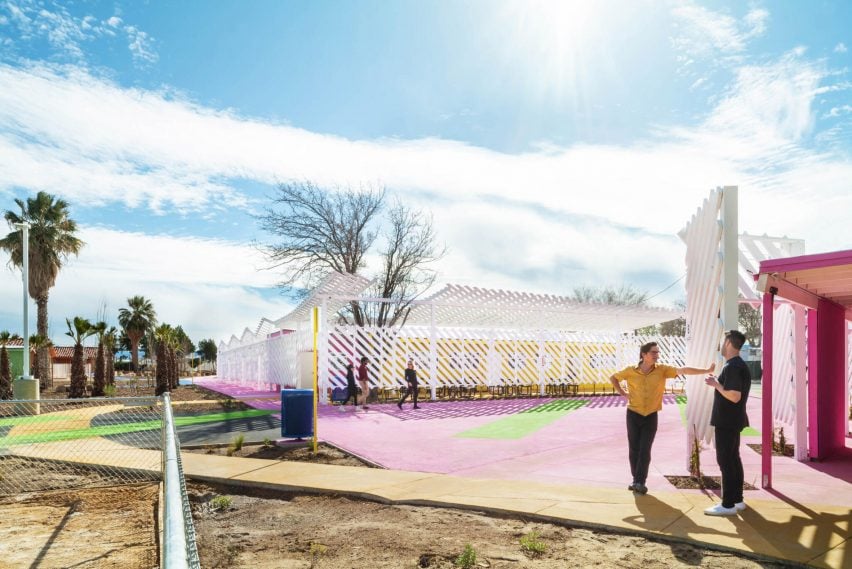
The project involved refurbishing the stucco-clad motels – one had nondescript structures, and the other had two long bars topped with traditional clay-tile roofs.
The team came up with “low-cost, high-impact design techniques”, including colour and graphics, to create a complex that felt spacious, mitigated the desert heat and fostered a sense of community.
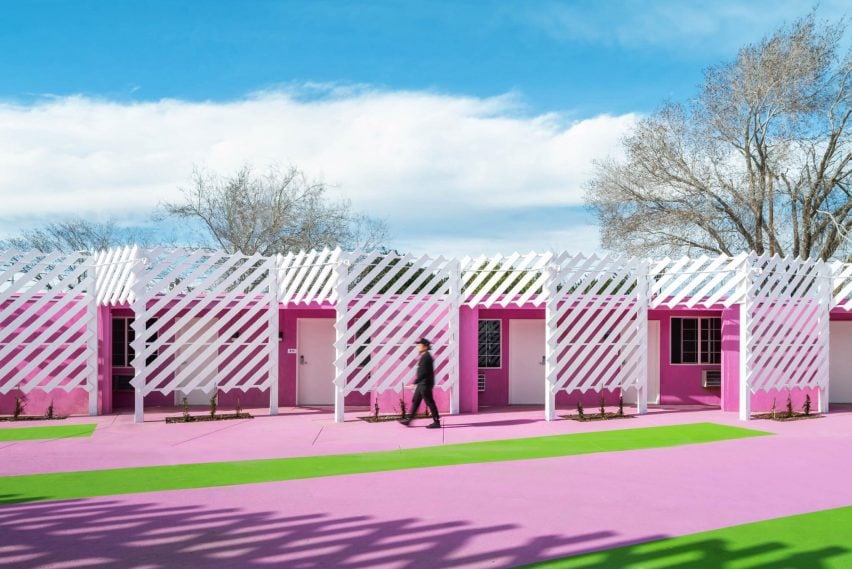
“These strategies were also effective in unifying, into a single campus, two architecturally distinct properties,” the team said.
Bright shades of pink, blue, orange and green were used to animate buildings and the ground plane.
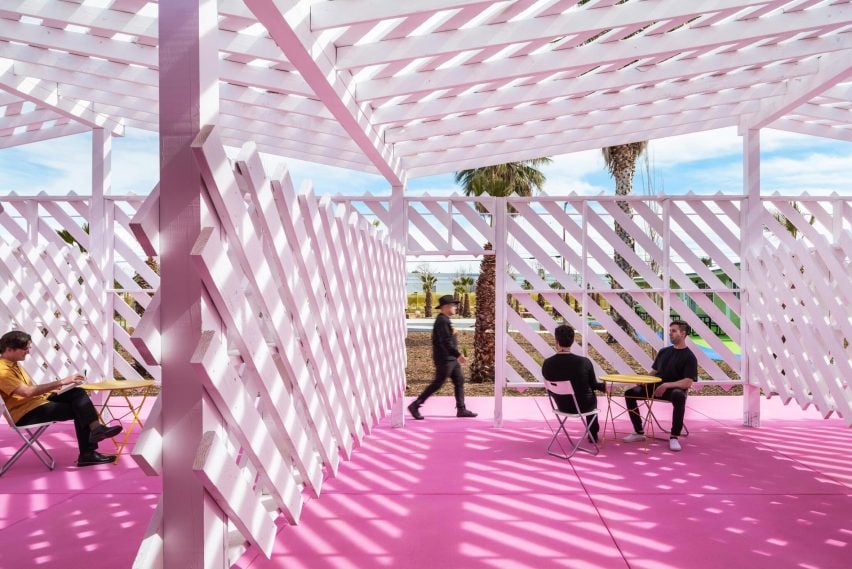
Along one of the buildings, the team added “solar porches” encircled by prefabricated white screens and topped with wavy canopies, all made of standard dimensional lumber. The porches extend the living space of the housing units, helping them feel less cramped.
A former parking lot was converted into a park with seating and trees. Winding through the property are colourful concrete pathways inspired by artist Brice Marden’s “Propitious Garden” paintings.
Also found on the property are spaces for small and large gatherings, “to help fortify a sense of belonging and community”, the team said.
Much of the site features permeable surfaces that enable rainwater from infrequent storms to penetrate the ground. Running through the centre of the site is a required asphalt fire road, which is adorned with graphic stripes of high-albedo paint.
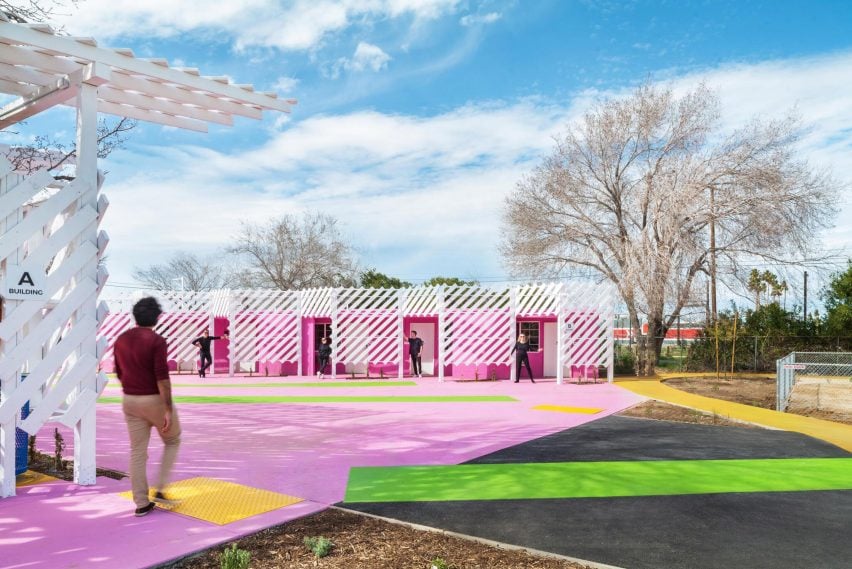
The project posed several challenges, including the desert conditions and poor infrastructure.
The addition of a sewer system, along with other costly infrastructure updates, led to a tight budget for design elements – which the team embraced.
“The site and desert landscape posed distinct challenges and opportunities in exploring expansion of living space, sustainability and resilience,” the team said.
Residents receive three hot meals a day, and case managers are on-site to help provide various support services.
The project is part of the state of California’s Project Homekey initiative, which provides funding for local governments to rapidly create housing for the homeless.
The Sierra is the third property designed by Kadre Architects for Project Homekey – the others being The Alvarado in Los Angeles and The Woodlands in Woodland Hills.
It is estimated that unhoused Californians represent 28 per cent of the total unhoused population in the US.
Additional projects for people experiencing homelessness in southern California include a tiny home village designed by Lehrer Architects and an apartment complex made of shipping containers, designed by NAC Architecture and Bernards.
The photography is by Paul Vu.
Project credits:
Architecture: Kadre Architects
Architecture team: Nerin Kadribegovic (principal), Ashle Fauvre and Kevin Wronske (project managers), Alicia Amos and Ace Cuevas (project designers)
Contractor: FORD EC (Arash Daghighian, Sam Daghighian, Farid Hamedy, Manny Abarabar)
Landscape architect: Kadre Architects, concepts; Terremoto (David Godshall, principal)
Civil engineer: Barbara L Hall and Associates
MEP engineer: Creative Engineering Group (Richard Ibrahim)
Structural engineer: Nous Engineering (Omar Garza)

